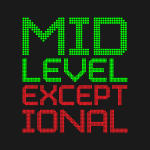The Signpost
May 5, 2013; Miami, FL, USA; LeBron James speaks after receiving his fourth MVP award. Mandatory Credit: Steve Mitchell-USA TODAY Sports
I want to fast-forward to July 2016.
NBA fans should already look forward to that month for being the single most important stretch for elite player movement in a long time, possibly in league history. In addition to that drama, I am looking forward to the 2016 free agency period for a different reason.
LeBron James stands in a different place than any other NBA free agent ever because of his unusual situation. He can rest assured that a max contract (years and dollars) will be available from someone each off-season unless he has a catastrophic injury but still appears likely to stay in the same city for the remainder of his prime. Those factors in combination mean that LeBron can sign any contract he wants with the Cavs since Cleveland will be over the moon to have him as long as possible.
Much has already been made of his new contract which is a one year plus a player option deal I am calling the “LeBron Special” and hope catches on. That name makes even more sense because he almost inevitably will decline his player option and then sign another LeBron Special next summer to maximize flexibility.
Players want to be free agents in the Summer of 2016 because it looks to be the perfect storm of a few major factors that shape NBA contracts. First, the NBA will be under a new TV deal and no matter how the league tries to ease into it a gigantic increase in revenue will go partially to the players in the form of a larger salary cap that season. While we do not know the exact number it certainly should be a substantial increase. That holds additional value for maximum level free agents because the richest deal they can sign as free agents is the larger of a given percentage of the cap based on experience or a proportion of their previous salary. Move the cap up and the best of the best can get more money per season.
Almost as importantly, the Summer of 2016 should be the last one under the current Collective Bargaining Agreement. With both the players and owners having an opt-out after the 2016-17 season, the game should play out like most mutual options in sports: at least one side thinks they can do better and opts out. While many are expecting that to be the players, I expect it to be the owners seeing a chance to break the players and lock in an even more favorable agreement for the future. Remember that rapidly expanding franchise price tags means that the pool of owners has changed into a collection of wealthier and generally more savvy business owners who have enough money to handle any short-term revenue losses from a lockout and see the long-term benefits of grinding out a more favorable CBA.
This perfect storm of a meaningful cap increase and the same CBA should lead to lots of players taking long-term security that summer. After all, they will likely be looking a labor stoppage in the eyes at that point and historically new agreements have not been particularly advantageous for the elite players since the rank and file simply have more voting members in the NBPA.
These factors also explain why LeBron James works as the signpost for what we could see in the next CBA. As a player presumably able to get his maximum in either Collective Bargaining Agreement who should have ample knowledge of where the Player’s Association stands, LeBron making the right decision for himself (the truest constant of his off-court career as a professional) will tell the entire NBA family where he expects the next agreement to go. A short-term deal could signify an optimism that a new CBA will raise or eliminate the low individual maximum salary even if the players’ share of Basketball-Related Income decreases while a long-term contract would be a bright line that elite players should get their money that summer.
Two years may be a long time to wait but it will yield the first reliable sign of how the next Collective Bargaining Agreement will work for elite NBA players.


